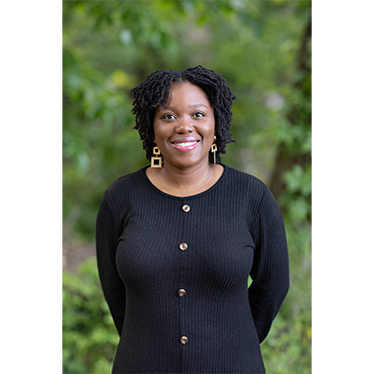5 Questions Friday: Clean label ingredients
The great debate: What exactly are clean label ingredients? We pose the question—and related questions about one of the industry’s buzziest terms—to the inaugural Food & Beverage Insider Editorial Board.

Earlier this year, we established the Food & Beverage Insider Editorial Council. It’s comprised of industry professionals, including food scientists, a market research expert and procurement manager. That’s certainly a well-rounded collective of folks!
We meet each quarter to discuss industry issues and how Food & Beverage Insider may better cover them. Those conversations are so good that we decided to bring them directly to the audience.
Every last Friday of the month, get ready for “5 Questions Friday,” when we propose a topic, ask them some questions and they answer them. It’s just that simple.
For the first one, we asked them to discuss “clean labels.” Here’s what they had to say.
How do you define “clean label” ingredients?
Abena Foli, food scientist/founder, POKS Spices: Currently, there isn't a federally regulated definition for clean label or clean food ingredients. The push and trend for clean label ingredients and food has been mostly consumer driven, with different segments of the consumer base of a product category, leading the charge on what is deemed as clean food ingredients. This has led to the creation of "no no" or "unacceptable" ingredient lists by retailers like Whole Foods and agencies such as Center for Science in the Public Interest (CSPI). Even then there isn't a consensus on what clean label means. For some, it means "natural," while for others it means "minimally processed," even though the use of those terms is used vaguely. CSPI has a list of banned ingredients and a Chemical Cuisine Rating to educate consumers on what it advocates to be safe ingredients, or clean label, versus those to avoid.
Candace Smith-Lee, senior food scientist, beverages, ofi: The term “clean label” can mean different things to different people as there’s not a standardized industry definition. I personally define “clean food ingredients” as minimally processed ingredients with functional health benefits.
Harper Hall, global flavor applications and technical service lead, Ingredion: The term "clean label" lacks a formal definition, and what one formulator or consumer might consider clean label, another may not. In addition, formulators need to consider processing technologies in choosing one ingredient over another. Nomenclature also does not drive the perception of clean alone. Certain technologies may be considered cleaner than others, so in practice, determining clean label ingredients requires understanding where the ingredient comes from and measuring what consumers recognize and accept.
What are the pros and cons of companies applying a clean label ingredient philosophy to products?
Foli: Benefits of applying a clean ingredient philosophy include:
Possible shorter ingredient listing
Possible more familiar sounding ingredient lists to the consumer
Greater acceptability of product by the consumer
Possible increased shelf life of the product
Possible greater increase in exporting to geographies like the EU where "clean label" is a part of the food system
Cons of applying a clean ingredient philosophy include:
Possible increased product costs
Possible inconsistency in organoleptic features such as product colors, smell and taste
Possible reduced product shelf life
Smith-Lee: Some of the pros to a clean label ingredient philosophy can be making the ingredients go further by providing functional health benefits in a product. For example, if an ingredient offers multiple functionalities, that can help with a shorter label. Consumers may also be willing to pay more for products they view as clean label. In terms of cons, food and beverage companies will need to consider factors like potential shelf-life reduction or further finished product processing as a result of the clean label ingredients. Sourcing can also be a challenge if you’re working with something like dairy ingredients, but working with a value-added ingredients and solutions provider like ofi can help you plan across the supply chain from sourcing through to processing and packing.
Hall: Pros would include influencing the food supply to shift to more quality and affordable solutions for clean label. The pressure from customers for clean labels gives rise to innovation in the space—and healthy competition in the market. This competition is a good thing for keeping the ingredient sector robust, as I see it. Cons, of course, are cost, especially for smaller companies. Cost is still high for some technologies, depending on where they are in their life cycle and if they are commoditized. In addition, smaller companies may be unable to meet minimum order quantities, squeezing them further in this space. Clean label formulating is also a little trickier than traditional due to wanting minimum ingredients on a label and looking for functional, clean label ingredients. Quality and safety are essential, and formulators unaccustomed to the potential limitations of clean label formulating may need to be more creative or flex their ideas of what clean is to be sure their product will still withstand shelf life (or adjust shelf life expectation or grocery store placing).
What types of F&B companies have you observed make the move toward cleaner labels, using better-for-you ingredients in their products? Is it becoming more prevalent in the industry?
Foli: Regional retailers like Whole Foods and Sprouts.
Hall: I'm seeing this everywhere; it isn't limited to a specific category over another. I've seen it in everything from personal care to candy to nutrient-dense foods like yogurt. I've even seen it in the alcoholic beverage category, where labels are not yet required. Big brands are taking notice, and even if they do not invest in a new line, they may purchase such a startup and allow it to operate largely independently, aiming to maintain its cleaner label brand focus that had made it appealing in the first place. Over the last decade, better-for-you has carved out its space and will likely remain a product staple.
Is there a list of recommendations from FDA, USDA, etc.? Is that industry terminology for single ingredients (fruits, vegetables, grains) without additives?
Foli: Currently there is not. Nevertheless, other agencies, such as the Clean Label Project, which was established a couple of years ago, provide clean label certification for products that meet their definition of what clean label is.
Smith-Lee: FDA or USDA don’t currently have a proposal for clean label. FDA has, however, proposed a “healthy” definition for food labeling for single ingredients and finished products.
Hall: Some formulators look to leading industry lists for guidance. This practice is based on a given industry anchor. I believe it is "clean label" behavior feeding into "clean label" behavior through industry drawing its conclusions, which, in a way, has helped to give formulators guardrails.
Among other things, USDA limits what can and cannot be used for meat and produce. FDA has GRAS (generally recognized as safe), but GRAS does not look at what could be considered a clean label on an ingredient declaration. This is key to understand for any formulator looking to make front-of-pack claims, such as reduced sugar. There are specified GRAS limits for ingredients in some cases, regardless of how the label reads, whether considered clean label or not. Federal Emergency Management Agency (FEMA) defines what constitutes natural flavor and what will not. This is an interesting line on an ingredient facts panel some manufacturers are beginning to delve into for improved transparency. Clean label is not a regulated term and is up to final interpretation by the brand. As a result, what one brand identity is willing to label on their clean label formulas, another may not. From an ingredient supplier standpoint, it's always good to understand how each customer defines their own "brand" of clean label.
Briefly describe how smaller companies should approach a clean ingredient philosophy as opposed to larger companies.
Foli: For smaller brands/companies, adopting a clean label philosophy or approach could be a value-add to the product's value proposition and be a competitive advantage for shelf placement. This benefit, however, has to be weighed against attributes like product cost, shelf life and consumer product acceptability to make that decision.
Smith-Lee: Companies should check with their legal or regulatory teams and consultants to ensure any “claims” they want to make don’t fall outside of established FDA or other international agency regulations.
Get ready for more industry insight from the Food & Beverage Insider Editorial Board when 5 Questions Friday publishes every last Friday of the month.
About the Author(s)
You May Also Like









